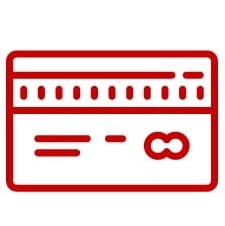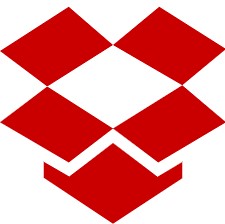So you’ve decided to split your business into separate parts, and you want those parts to be owned entirely independently of each other. This might be because parts of the business are developing in very different ways, or it may be because you have a buyer for one part, but not for the other. Whatever the reason, you may have thought that you could simply transfer out the business and assets that you want to separate; but IT separation is a complex process.
An adapted standard IT project methodology can provide an effective framework for managing IT separation successfully. A careful assessment of the complexity of the separation is an important component of this approach and underpins effective project planning and the allocation of appropriate time and resources. We have carried out IT separation projects across a wide range of industries, where our project methodology has been proven to deliver successful IT separation and, for many clients, significant IT optimization benefits. The key elements of our approach are:
– Assess IT separation complexity with a list of key drivers to determine functional dependencies
– Identify optimization potential of the newly built entity
– Let the new entity be in charge of the IT separation process
– Define a clear IT separation agreement between parent company and new entity
– Precisely plan data migration and prepare for exceptions
– Extract and migrate data to new entity
Corporate restructuring has an important role to play in both these scenarios. Since IT has evolved from a supporting business task into a “business enabler” it is nowadays a driver for business success and sustainability that needs to be dealt with in de-merger projects. IT separation is concerned with separating a business’s IT from a company’s core structure without damaging the remaining business. Yet this brings complex challenges with it. Questions that might immediately arise include: How to manage IT separation projects? How should existing data be divided between the new entities? How complex will the process be – and how is it best managed? What about system replacements and new resources?
These are difficult questions, but finding the right answers will be fundamental to the future sustainability and success of any carved-out or de-merged businesses. Our project examples show that enhancements gained by IT separation can reduce IT operational costs by up to 50%, although a significant initial investment in implementing change is required.
IT separation with an adapted IT project methodology
IT separation projects can be carried out successfully using a standard IT project methodology modified to address the distinct challenges presented by IT separation activities specific to IT separation projects:
– Identify functional dependency (IT separation complexity)
-Identify opportunities to optimize IT
-Identify new IT organization and skills
-Planning and migrating data
IT separation complexity
The complexity of an IT separation project is determined by the degree to which the IT systems of the two entities are dependent on each other. Complexity is driven primarily by the degree to which applications are shared or integrated. The number of applications, the technical environment in which they are used and the volume of transactions managed by these applications also have an impact on complexity and business risk.
OPPORTUNITIES TO OPTIMIZE IT
IT separation projects provide the opportunity to re-consider a company’s IT capabilities from both a business perspective, shaped by strategic business questions, and a technology perspective focused on improving IT capabilities through technology enhancements and innovation
New IT organization and staff skills
Establishing a clear organizational structure from the very beginning is a key requirement for IT separation success. An IT separation agreement between the two entities is valuable for establishing an agreement on key issues. These issues include a list of infrastructures and agreement on ownership, the cost of transferring hardware and software, and the price of any services to be delivered by the parent company after the separation.
PLANNING AND MIGRATING DATA
One of the final and most critical aspects of IT separation is data extraction and migration to the new entity. The first step in data migration planning is to identify the data that must be extracted or replicated. This stage includes addressing issues such as application changes or legal ownership of data. Next, the migration specification is developed. It defines the actions needed to migrate the data successfully, for example, which are the relevant databases and how data will be consolidated before migration. The complexity driver for these first two steps is the complexity of the data model, not the volume of transactions.
The three remaining steps involve the transfer of the data to the new entity. Before data migration takes place, a test migration system is built and may incorporate either migration tools provided by ERP vendors or custom developments. The data is then “cleansed” before being transferred, in the final step, to the new application environment. The major complexity driver of data migration is data volume, as the higher the volume of data
the greater the number of migration exceptions that are likely to occur. Methods or processes need to be established to resolve migration exceptions either automatically or manually.
Key IT Components of the SPLIT
IT is usually the largest source of TSA items because it includes everything from IT infrastructure and document management to application interfaces and company websites. Every demerger should address the following IT concerns:
- Software licenses: Some vendors object to allowing their use—referred to as the Right to Use (RTU) by the sold business during the TSA.
- Third-party connectivity: Customers, suppliers, and others will have to get involved in the transition from the selling company environment to the buying company environment.
- Shared locations: All infrastructure items, from networks, wiring closets, and data rooms, to printers and phones, need to be segregated.
- Third-party agreements: Infrastructure and/or application support often fall into this category.
- Cloud environments: Consider not only who will “own” data currently stored in the cloud, but also the cost to transition to the buying company environment.
- Help desk: A divestiture often requires an interim process so the help desk can transition from buying to selling company, while still managing calls between the seller and buyer help desks.
- Alignment and transitioning: Cybersecurity policies usually differ, so it’s important to ensure that all IT items in the TSA comply with both policies.
If you want to know more about how Network Doctor can help you with an IT separation project contact us or sign up for a free consultation.






























